Planting Winter Cropping Potatoes You Can Grow To Enjoy For Christmas Dinner

VEGETABLES > POTATOES > WINTER-CROPPING

Elizabeth is a Permaculture Garden Designer, Sustainability Consultant and Professional Writer, working as an advocate for positive change. She graduated from the University of St. Andrews with an MA in English and Philosophy and obtained a Diploma in Applied Permaculture Design from the Permaculture Association.
Reviewed By COLIN SKELLY

Colin is a Horticulturist and Horticultural Consultant with experience in a range of practical and managerial roles across heritage, commercial and public horticulture. He holds the Royal Horticultural Society’s Master of Horticulture award and has a particular interest in horticultural ecology and naturalistic planting for habitat and climate resilience.
Contributions From EMILY CUPIT

Emily is a Gardening Writer, Photographer and Videographer from Derbyshire, UK. She is the Founder of Emily's Green Diary - a community of more than 75,000 people who share in her gardening journey.
IN THIS GUIDE
POTATO GUIDES
Container Growing
Desiree Potatoes
Growing From Store Bought
Growing In Grow Bags
Potato Blight
Storage
Sweet Potatoes
Winter Cropping
Potatoes are a staple crop for many home growers, and most will plant tubers in spring to harvest in summer or autumn.
However, what many do not realise is that if you have an undercover growing area such as a greenhouse or polytunnel, you can enjoy not only stored maincrop potatoes for your Christmas dinner – but also potentially delicious new potatoes too.
Christmas cropping potatoes are the first or second early potato varieties that are planted not in the spring, but in mid-late summer or autumn.
These potatoes will create a crop of new potatoes that you can harvest over the festive period.
In order to be able to grow potatoes late into the year, you will generally require an undercover growing area.
However, this job may also be possible in some more sheltered and warmer parts of the UK if you use cloches, row covers or other forms of protection.
If you would like to grow fresh potatoes for Christmas, here is what you need to do:
- Choose a variety of potatoes (such as ‘Charlotte’ or ‘Maris Peer’) to grow and source your seeds.
- Select a suitable location for your potatoes.
- Plant your potato tubers into the container you have chosen.
- Earth up your tubers, and ensure that frost-free conditions are maintained.
- Once foliage dies down in late autumn, remove and compost this, leaving tubers in place.
- Keep the tubers safe in their pots until the festive season.
| Difficulty | Medium |
| Equipment Required | Pots, greenhouse or polytunnel |
| When To Plant | July-August |
Plant Them In July Or August
When precisely you plant Christmas cropping potatoes will depend on where you live and the conditions to be found there, and when the first frosts are expected.
Generally speaking, this is a job that you undertake either in the second half of July or in August.

Here in Scotland, I tend to get a better crop if I plant Christmas cropping potatoes close to the end of July, while for growers in most of England, August planting in a polytunnel or greenhouse is typically recommended.
1) Choose Your Potatoes
My favourite potatoes for Christmas cropping are ‘Charlotte’ and ‘Maris Peer’, but any first-early or second-early potato varieties can be used.
It is important to note that you cannot simply take summer-harvested tubers and replant these.
The tubers go through a long period of dormancy after harvesting so they will not grow.
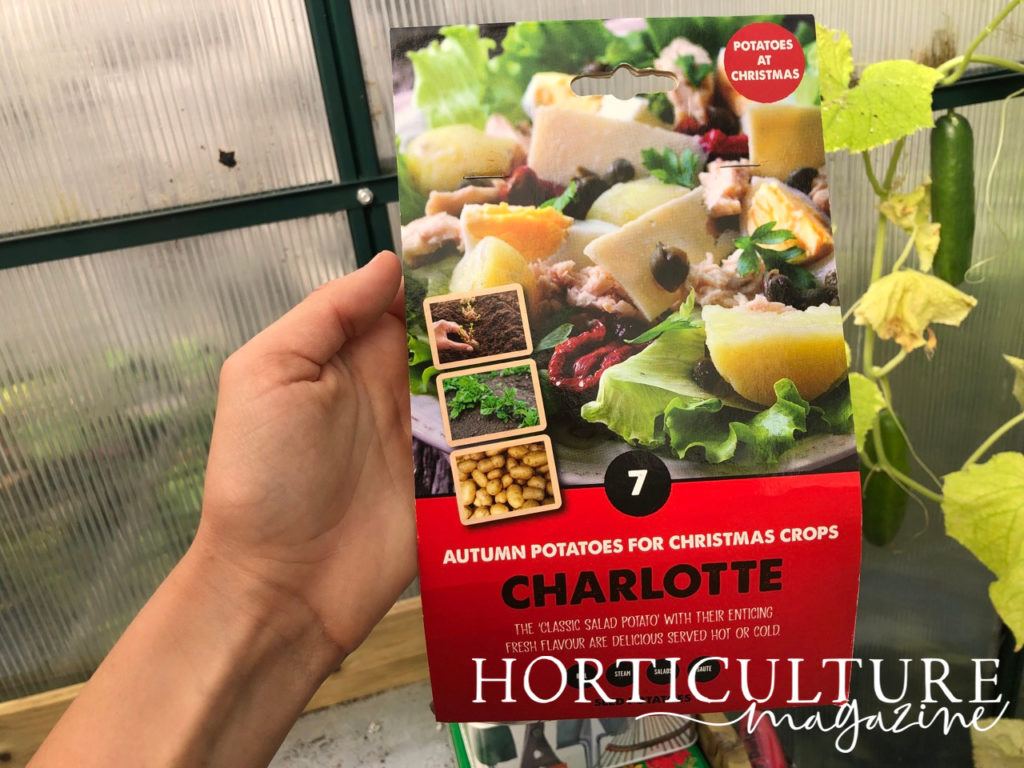
What you need to do is either purchase cold-stored potato tubers from a commercial vendor in the summer or hold back tubers purchased in spring by keeping them in a cool light place throughout the warmer months.
The latter is more difficult because these held-back tubers will develop long and rather fragile shoots, which can get aphid problems and must be checked often for issues.
I sometimes hold back some tubers to plant but have experienced mixed results.
2) Find A Suitable Location
Once you have chosen a variety and sourced the seed potato tubers, you need to decide where to plant them.
As mentioned above, growing new potatoes for Christmas will usually involve undercover growing in a greenhouse or a polytunnel or, at the very least, giving outdoors-grown plants more protection to keep them frost-free in autumn.

Container growing is generally the easiest option, since containers won’t take up much space in your growing areas and can be protected more easily as the weather grows cold.
There are a number of different container options to consider.
You can use large pots, barrels, buckets, sacks or grow bags.
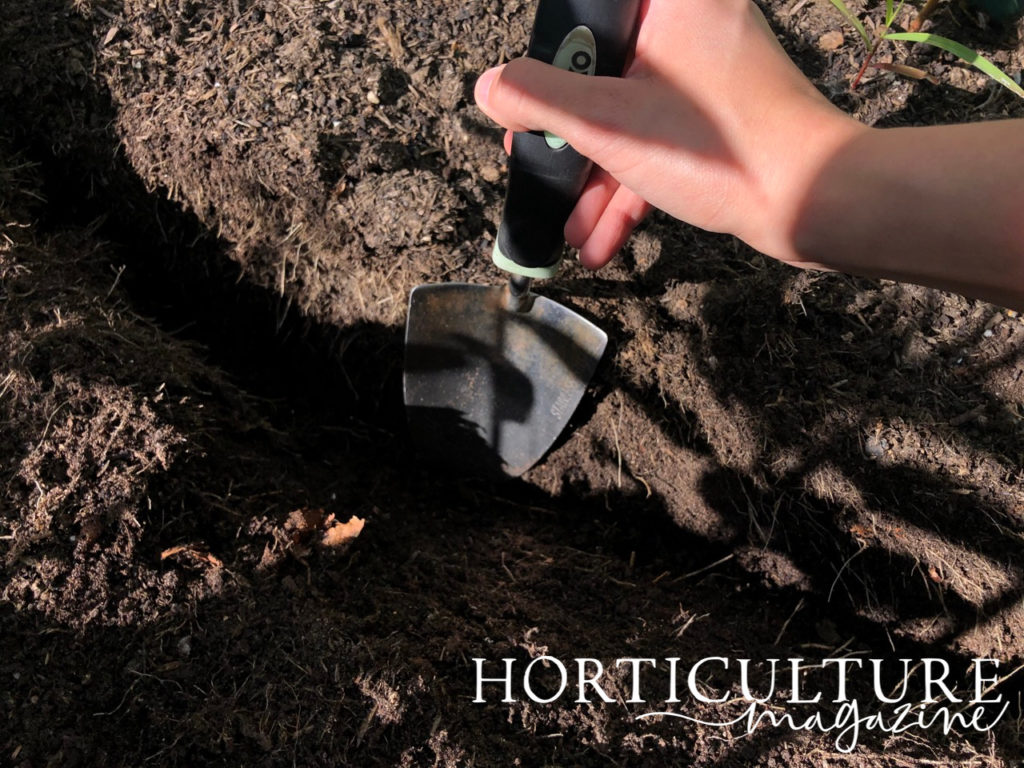
I use large reclaimed buckets to grow my Christmas-cropping potatoes, placing these outdoors and then moving them into my unheated polytunnel which, with added thermal mass, stays frost-free in all but the most extreme of winters where I live.
3) Plant Your Tubers
Once you have decided on a container for your Christmas cropping potatoes, place a little of your growing medium in the base (around 15cm deep), then place your tubers on top.
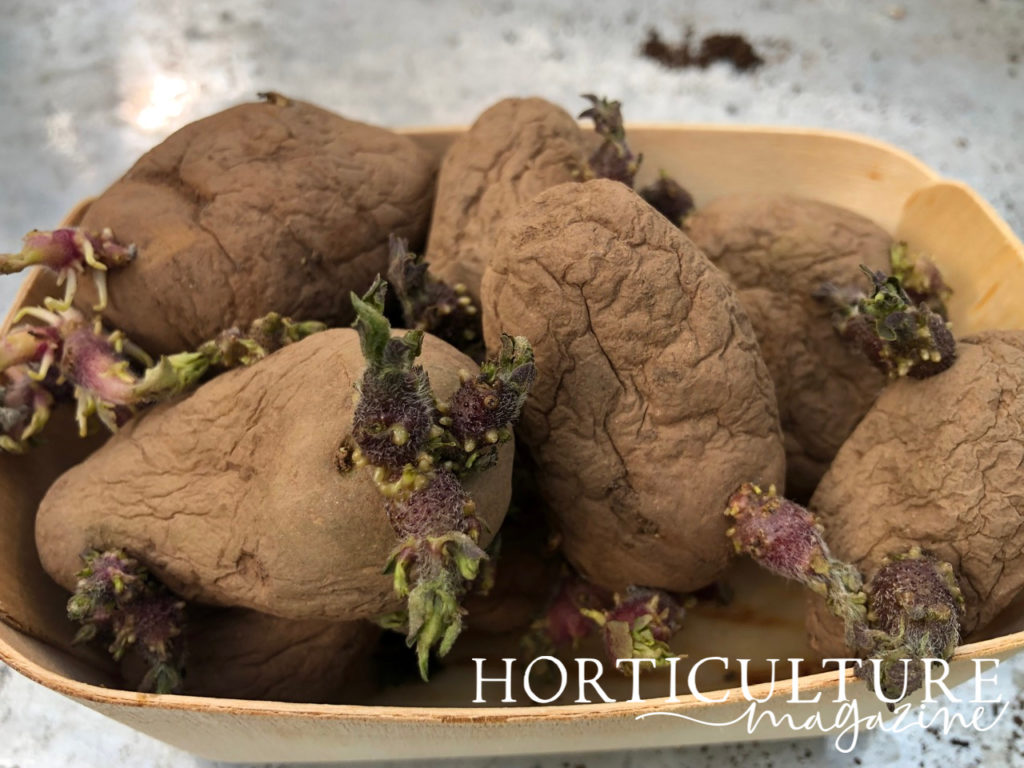
Cover them over with another 15cm or so of the growing medium so your containers are around 1/3 full.
Any peat-free multipurpose potting mix will be fine, and I use a homemade mix of 1/3 loam soil, 1/3 compost and 1/3 leaf mould.
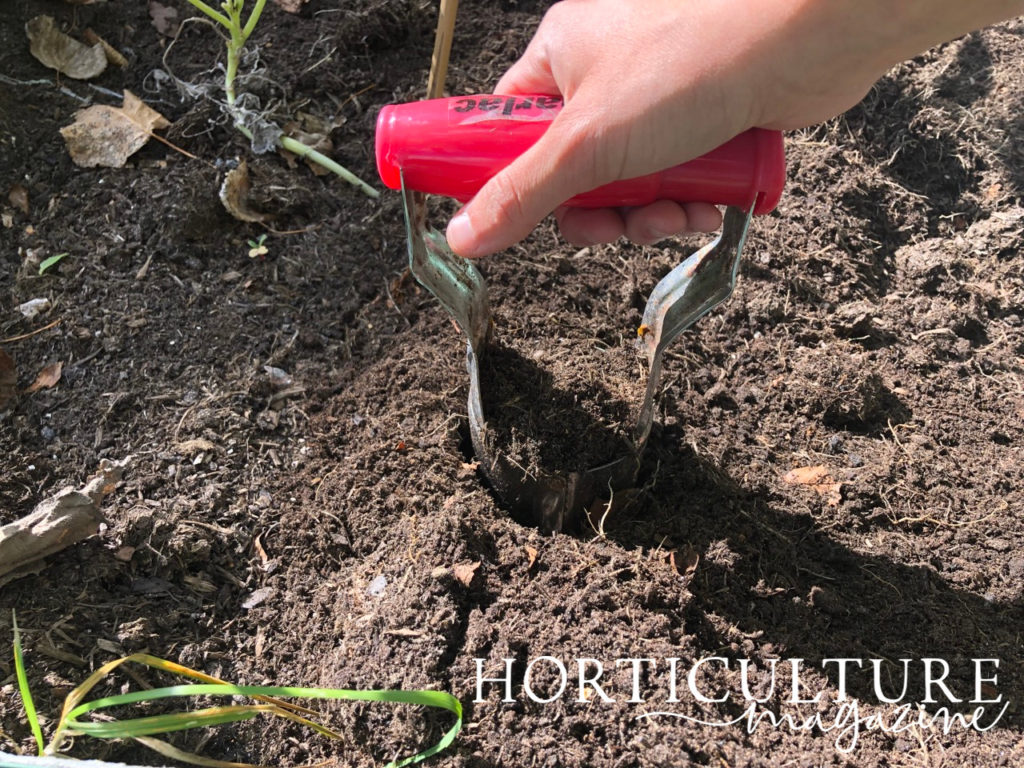
I also lay the tubers on a bed of comfrey leaves, to provide additional nutrients upon planting.
A rough guideline to follow when deciding how many potatoes to place in a container is that you should allow 10L of capacity for each tuber you plant.
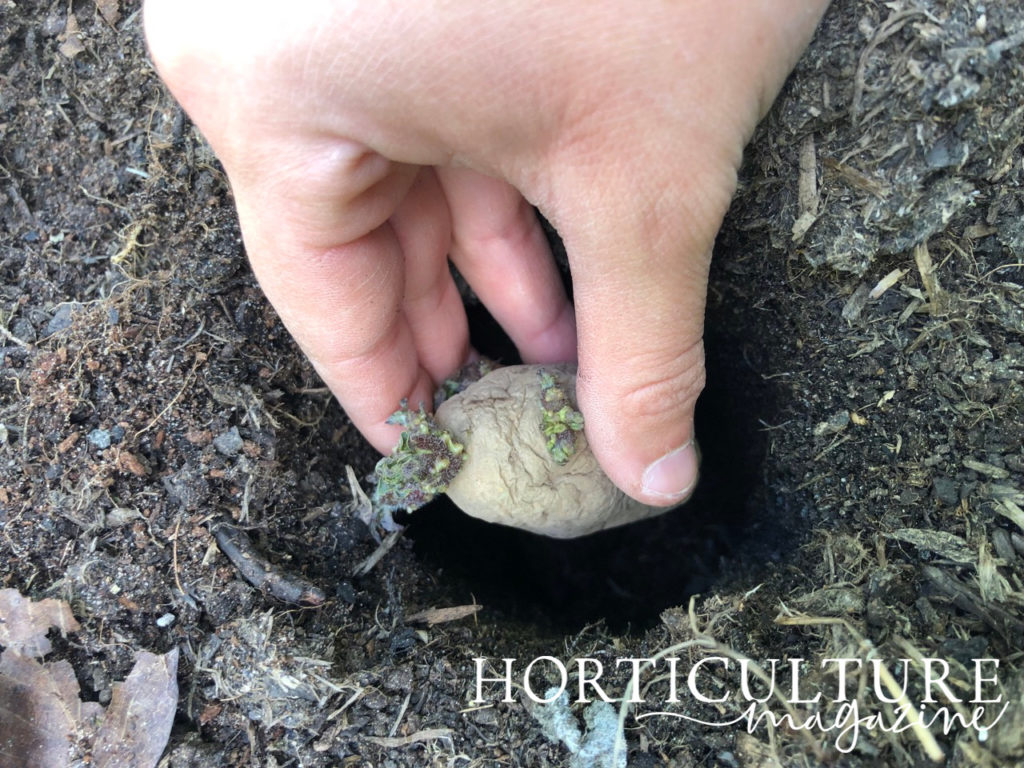
So, in a container with a 50L capacity, you can place 5 seed potatoes.
Using this as a rule of thumb can help you determine spacing, but use common sense as well.
4) Earth Up Potatoes
Once shoots emerge from the top of this growing medium, you will gradually ‘earth up’ the potato plants as they continue to grow, just as you do when growing potatoes in the ground.
Remember to water consistently, watering at the base of the plants rather than from above, for best results.
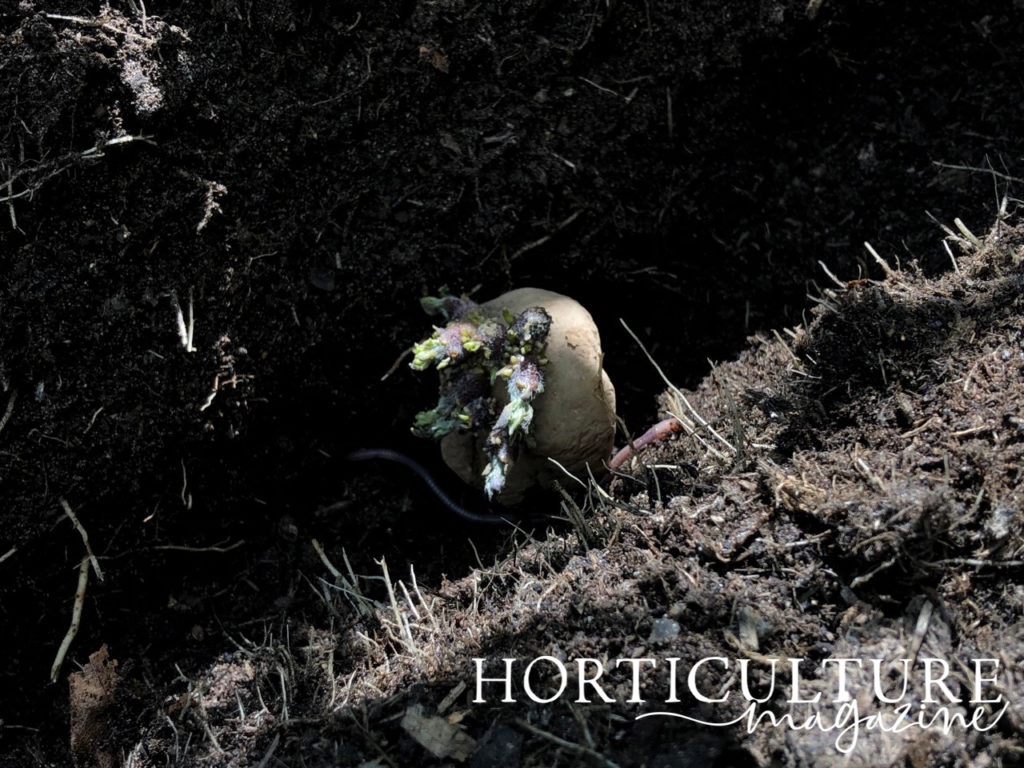
Don’t allow the growing medium to dry out but avoid waterlogging.
To give potatoes a boost you can also consider watering with an organic liquid plant feed.
I use a seaweed liquid feed or compost tea when watering around 3 times over late summer and early autumn.
The most important thing, however, when growing new potatoes for Christmas, is to make sure that the area where you are keeping your potatoes remains frost-free.
Taking steps like increasing thermal mass and adding insulation can help keep an unheated undercover growing area free from frost as winter approaches.
5) Remove & Compost Dead Foliage
In late autumn, the foliage on your potato plants will die back.
Once this happens, remove and compost this material (as long as it is disease free).
6) Keep Tubers In Pots Until Required
The tubers should remain safe below the surface in your containers.

However, look out for squirrels, rodents or other pests, and where necessary, cover the tops of the containers to make sure no one gets to the tubers or unearths them before you do.
When you want to harvest, you can just delve into the container to find potatoes to harvest if you need only a few at a time, or you can tip out the whole container and harvest the tubers from within it all at once for a special festive meal.
“I have never grown potatoes for Christmas but growing in a container in my greenhouse looks like a viable option,” shares Master Horticulturist Colin Skelly.
“I may need some metal mesh to keep out the mice as they would definitely take an active interest.”
